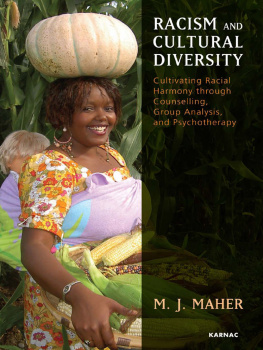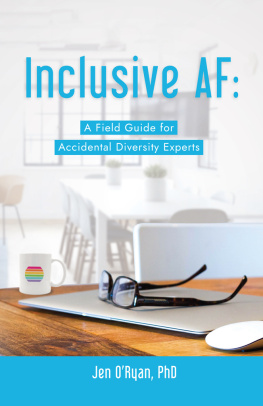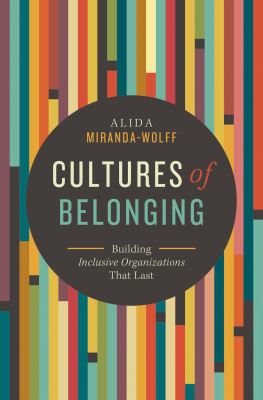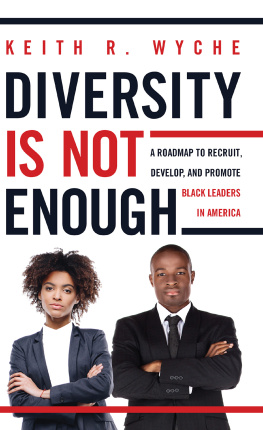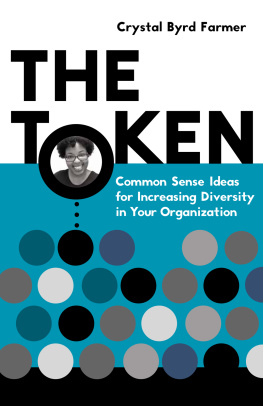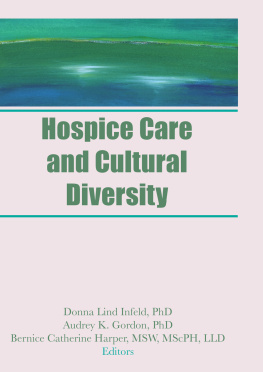CONTENTS
Guide
Copyright 2021 by Bethaney Wilkinson
All rights reserved. No portion of this book may be reproduced, stored in a retrieval system, or transmitted in any form or by any meanselectronic, mechanical, photocopy, recording, scanning, or otherexcept for brief quotations in critical reviews or articles, without the prior written permission of the publisher.
Published by HarperCollins Leadership, an imprint of HarperCollins Focus LLC.
Book design by Maria Fernandez for Neuwirth & Associates.
Any internet addresses, phone numbers, or company or product information printed in this book are offered as a resource and are not intended in any way to be or to imply an endorsement by HarperCollins Leadership, nor does HarperCollins Leadership vouch for the existence, content, or services of these sites, phone numbers, companies, or products beyond the life of this book.
ISBN 978-1-4002-2629-0 (eBook)
ISBN 978-1-4002-2623-8 (HC)
Epub Edition August 2021 9781400226290
Library of Congress Control Number: 2021942458
Printed in the United States of America
2122232425LSC10987654321
Ebook Instructions
In this ebook edition, please use your devices note-taking function to record your thoughts wherever you see the bracketed instructions [Your Notes] or [Your Response]. Use your devices highlighting function to record your response whenever you are asked to checkmark, circle, underline, or otherwise indicate your answer(s).
Information about External Hyperlinks in this ebook
Please note that the endnotes in this ebook may contain hyperlinks to external websites as part of bibliographic citations. These hyperlinks have not been activated by the publisher, who cannot verify the accuracy of these links beyond the date of publication
To Bishop and Janet,
whose faithful legacy of impact and love will carry on for generations
When a flower doesnt bloom, you fix the environment in which it grows, not the flower.
Alexander Den Heijer
DIVERSITY
The state of having multiple races, ethnicities, nationalities, and cultural perspectives on your team.
INCLUSION
The experience of being welcomed and of authentic belonging.
RECONCILIATION
The ongoing process of restoring authentic and mutually dignifying relationships among people from different racial, ethnic, and cultural perspectives.
LIBERATION
Freedom from oppressive systems, stories, habits, policies, and practices.
CULTURE OF THE FUTURE
An organizational environment in which people from racially, ethnically, and culturally diverse backgrounds are heard, seen, uplifted, and supported at work.
An organizational culture in which leaders consistently and authentically disrupt systems of oppression.
THE DIVERSITY GAP
The distance between our good intentions for creating diverse organizations and the impact of those intentions.
O ne of the most significant decisions I had to make in writing this book was choosing how to identify and label various racial groups. This topic is widely debated. Here is where Ive landed for now:
Ive chosen to capitalize the names of specific racial groups when referring to the people they identify and representfor example, Asian, Black, White, Indigenous, and so on.
Ive chosen not to capitalize white and black when referring to institutions, systemic realities (e.g., white supremacy, white privilege, antiblack racism), and oppressive social groups (e.g., white nationalists).
Ive also chosen not to capitalize broad racial groups inclusive of varied and diverse peoples, perspectives, and experiences (e.g., multiracial, biracial, people of color).
When quoting or referring to specific individuals and their ideas, I identify them however they label or identify themselves. I capitalize or do not capitalize these identifiers according to their preference.
Each of these choices reflects a degree of generalization. As a rule, I value specificity, but generalizations make this conversation more accessible in the format of a book. Maybe one day, we can sit across from one another and hold a specific conversation. Until then, I hope these categories and stylistic decisions will do.
I m writing this book because, in my eight short years of working in majority white, values-driven institutions, Ive experienced a level of organizational heartache I didnt know was possible. This heartache brought with it all the fixtures of a romantic breakup: countless tears, sleepless nights, confusion from unmet expectations, and, of course, a broken heart. I entered the workforce at age twenty-two with wide-open eyes and hopeful visions to change the world. I prioritized working in values-driven, charitable institutions. I believed in the value of service and in our social responsibility to care for those on the margins. I wanted to be part of something bigger than myself, so I aligned my efforts with nonprofits, churches, and social enterprises.
Over time, despite my optimism, I found myself lonely, anxious, and depressed as I navigated the organizational cultures of do-good institutions clearly not designed with mea young Black womanin mind.
I experienced microaggressions on a regular basis. I was overlooked for promotions, because I wasnt perceived to be enough of a go-getter, despite my loyalty and hard work. When race-related issues did emerge in our work context, I became responsible for educating everyone, while also tending to my own race-related trauma. When I made suggestions for how we could be more inclusive of different racial perspectives, I was either argued with or my recommendations were ignored. In the heat of a racial crisis, I would be asked to weigh in on communications decisions to make sure our messaging was woke enough, but when I advocated for comprehensive racial justice programming, it either wasnt in the budget, wasnt a priority, or the calendar was too full.
These experiences were pervasive. They did not unfold in one work setting or in one organizationthis was my experience in multiple workplaces and on multiple teams. Ironically, I consistently found myself in rooms with leaders who would affirm their desire to have a more diverse organization, yet, as the only Black person on the team, I regularly felt disempowered and disrespected in these environments.
I started to wonder, Am I losing my mind? Is it me? Am I alone in this?
With these deeply personal questions and organizational frustrations in mind, I set out to explore this gap between peoples good intentions for diversity and the impact of those intentions. Leaders with good intentions were a dime a dozen; leaders with good impact, especially good impact on underrepresented racial minorities, were few and far between. I wanted to know why.
Over the past two years, Ive interviewed more than a hundred thought leaders, diversity and inclusion experts, creatives, authors, and entrepreneurs about organizational culture and diversity. Ive talked to people from a wide variety of racial backgrounds. Ive learned from people at different levels of organizational leadership. Ive attended events, hosted conversations, created a podcast, and more. Ive wrapped my life around questions of organizational culture and diversity.
While Ive been exposed to many perspectives on this topic, Ive come to realize that the most significant perspective I have to offer you is my own observations and stories based on thirty years of lived experience as a Black person navigating life in the United States. When your story is filled with moments as the first, the only, and the different, you quickly learn what exclusion feels like. However, you also acquire a strong sense of knowing what makes true inclusion possible.


